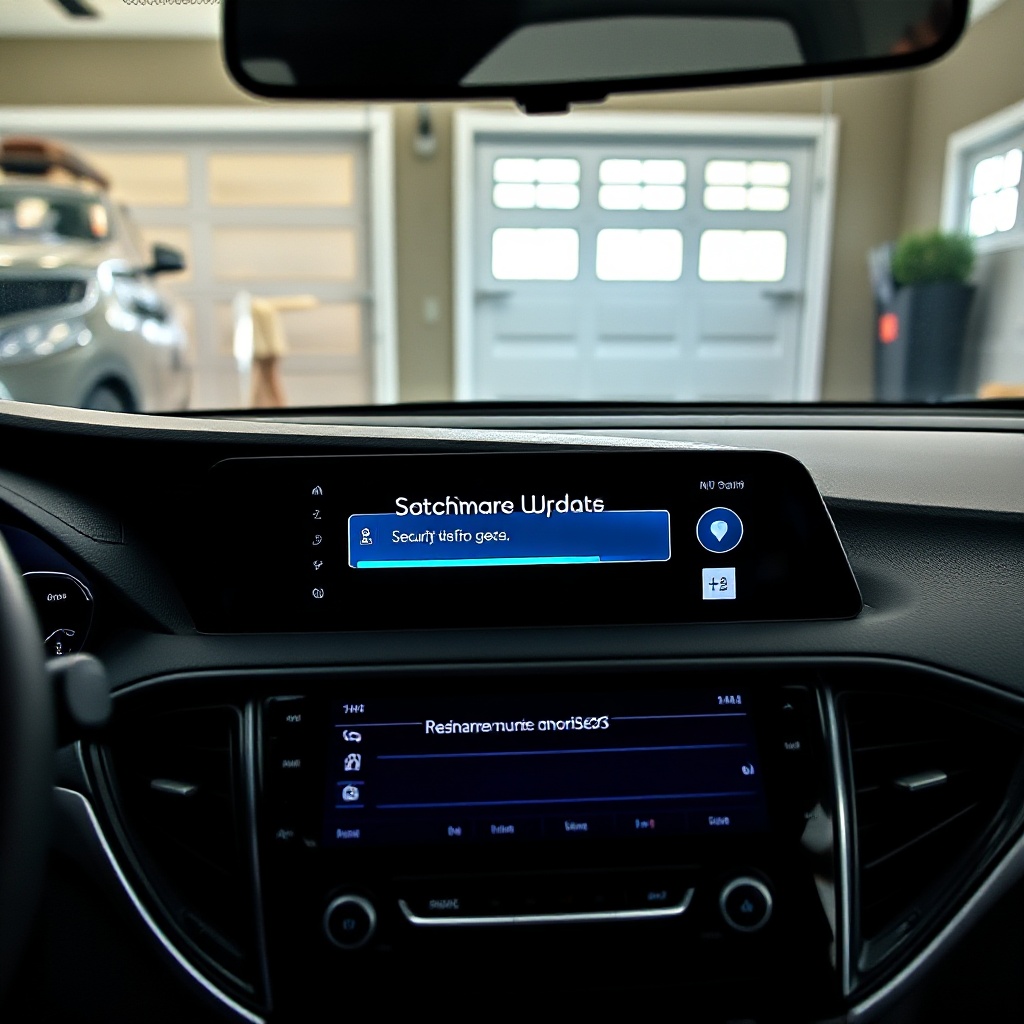
Discover how modern vehicles' wireless updates revolutionize features while creating cybersecurity challenges, requiring encryption and fail-safe protections.

Drivetech Partners
Modern vehicles have become sophisticated computers on wheels, containing up to 100 million lines of code and dozens of wireless interfaces that can now receive over-the-air (OTA) updates to enhance everything from safety systems to entertainment features. As automakers project billions in additional revenue from connected vehicle capabilities, they must simultaneously address the mounting cybersecurity challenges that emerge when critical vehicle functions become accessible through remote digital channels.
Key Takeaways
Automotive cyber incidents reached an all-time high in 2025, with 95% of attacks exploiting remote entry points rather than physical access
OTA updates apply to critical vehicle functions including crash-avoidance systems, infotainment, and even autonomous driving features
Advanced safeguards like digital signatures and encryption have become standard for authenticating and securing OTA update packages
Automated rollback mechanisms allow vehicles to revert to previous software versions if updates fail integrity checks
New regulations like UNECE WP.29 mandate cybersecurity management systems for vehicle certification and market approval
OTA Updates Revolutionizing Modern Vehicles: Promise and Perils
Over-the-air updates have fundamentally transformed the automotive industry. No longer are vehicles static products that gradually deteriorate from the moment they leave the dealership. Instead, they've become dynamic platforms that can improve over time, gain new features, and fix bugs without requiring a service appointment.
Today's connected cars contain more complex software systems than early space shuttles. With up to 100 million lines of code controlling everything from engine timing to infotainment, the ability to update this software remotely has become essential. These updates apply to crucial systems including crash-avoidance features, navigation, and even autonomous driving capabilities.

The business implications are substantial. Major manufacturers including Stellantis, General Motors, and Ford each project up to $20 billion in additional annual revenue by 2030 linked directly to connected vehicle features and OTA capabilities. These updates allow automakers to monetize software features long after the initial vehicle purchase, creating new revenue streams and customer touchpoints.
The Growing Cybersecurity Threat Landscape in Connected Vehicles
As vehicles become more connected, they face increasing security risks. Global automotive cyber incidents reached an all-time high in 2025, with a troubling 39% year-over-year increase. These attacks target connected cars, telematics systems, suppliers, and dealership management platforms.
What's particularly concerning is that over 95% of attacks in 2023 exploited remote entry points (such as APIs, wireless protocols, and cloud services), while only 5% involved physical access to vehicles. This dramatic shift highlights how digital connectivity has expanded the attack surface of modern automobiles.
Common attack vectors have evolved to include:
Remote code injection into vehicle systems
Ransomware attacks locking critical functions
Denial-of-service attacks disabling vehicle networks
Unauthorized access to vehicle control systems
API exploitation leading to data breaches
Theft of sensitive vehicle or driver data
Real-world incidents illustrate these vulnerabilities. In 2024, researchers uncovered critical security flaws in Kia's owner portal that could have allowed attackers to control millions of vehicles using just a license plate and VIN. Similarly, BMW patched 14 remote code execution vulnerabilities in their telematics and infotainment platforms through an OTA update following coordinated disclosure.
Technical Vulnerabilities in OTA Implementation
The implementation of OTA updates introduces specific technical challenges. System incompatibilities between independent software components pose significant risks when updates designed for one system inadvertently affect others. Connectivity issues during large file transfers can lead to incomplete downloads and failed updates.

Data corruption incidents have had real consequences. A notable example occurred in 2022 when a Tesla recall involved a steering calibration fix that resulted in some drivers losing power steering functionality entirely. This case highlights how even well-intentioned updates can create new problems if not thoroughly tested across all possible vehicle configurations.
Exposed or poorly managed APIs remain a leading source of data leaks, with an increasing number of vehicle-related credentials appearing on the dark web. These vulnerabilities create potential entry points for more sophisticated attacks targeting vehicle systems.
Advanced Encryption and Authentication Safeguards
To combat these threats, the automotive industry has developed robust security measures. Strong cryptographic signatures and end-to-end data encryption have become standard for authenticating, delivering, and installing OTA update packages.
All update packages must be digitally signed by manufacturers, with vehicles authenticating the signature before installation begins. This verification process ensures that only legitimate, unaltered software from the manufacturer can be installed on vehicle systems.
Update data is encrypted in transit to prevent tampering and eavesdropping during the download process. Additionally, several technical improvements enhance reliability:
Secure communication channels with network redundancy
Segmented update files allowing partial downloads
Local caching enabling installation to resume after connection loss
Incremental updates to minimize bandwidth requirements
These measures work together to ensure that updates can be delivered reliably even in areas with intermittent connectivity, reducing the risk of failed or corrupted updates that could compromise vehicle functionality.
Fail-Safe Mechanisms and AI-Powered Defenses
Modern vehicles incorporate sophisticated fail-safe systems to protect against update failures. Automated rollback mechanisms allow vehicles to revert to previous software versions if updates fail integrity checks or cause system instability.
Vehicles run validation tests post-installation; if failures or errors are detected, systems can autonomously trigger recovery protocols to restore previous functionality, minimizing downtime and user impact. This ensures that even if an update goes wrong, critical vehicle functions remain available.
AI-driven threat detection represents the cutting edge of automotive cybersecurity. These systems provide:
Continuous monitoring of vehicle systems for abnormal behavior
Detection of zero-day exploits through behavioral analysis
Adaptive protection that evolves in real-time
Predictive identification of potential vulnerabilities
Blockchain technology is also being piloted in automotive applications to verify the authenticity, traceability, and immutability of data transactions during OTA updates. This creates an additional layer of security against unauthorized code injection attempts.

Industry's Shift to Secure-by-Design Architecture
Automakers are increasingly migrating to centralized, software-defined platforms that utilize zonal controllers and integrated domain controllers. This architectural shift simplifies uniform security enforcement across vehicle systems and creates a more manageable security perimeter.
The centralized approach contrasts sharply with traditional vehicles, which featured dozens of isolated electronic control units (ECUs) that were difficult to update and secure consistently. Modern vehicle architecture consolidates computing resources, making comprehensive security easier to implement and maintain.
However, challenges remain. The wide disparity in software and hardware platforms across automakers complicates interoperability, and the lack of industry-wide OTA and security standards leaves room for system incompatibility. These inconsistencies can create security gaps at the interfaces between different systems or components.
Regulatory Framework and Compliance Requirements
Governments and regulatory bodies have recognized the critical importance of automotive cybersecurity. New global regulations including UNECE WP.29 now mandate cybersecurity management systems throughout a vehicle's lifecycle.
Compliance with standards like ISO/SAE 21434 is increasingly required for vehicle certification and market approval. These comprehensive frameworks address everything from design requirements to incident response procedures.
Automakers have responded by enhancing their security practices in several key areas:
More rigorous vendor vetting processes
End-to-end software provenance verification
Component authentication throughout the supply chain
Detailed security documentation and testing
These efforts are particularly important given that supply chain vulnerabilities accounted for the majority of newly published security issues in 2024. The complex global supply network that produces automotive components remains a significant potential weak point in vehicle security.
Future Outlook: Industry Collaboration and Defensive Strategies
The rise of remote attacks is driving more rapid incident disclosures and unprecedented cooperation across the automotive industry. The Kia and BMW cases from 2024 demonstrated the value of responsible vulnerability reporting, quick patch deployment, and coordinated security response involving manufacturers, researchers, and regulators.
Despite these efforts, automotive-related data breaches and security events are being reported at the highest levels since tracking began. This trend indicates the presence of persistent, motivated adversaries targeting vehicle systems and a growing need for proactive defense.
Looking ahead, the industry is likely to continue developing more sophisticated security approaches, including:
Advanced threat intelligence sharing between manufacturers
Standardized security protocols for automotive components
Enhanced driver authentication and authorization systems
More granular control over vehicle subsystem access
Regular security audits and penetration testing
These developments will be crucial as vehicles become even more connected and software-dependent, with autonomous features requiring absolute security guarantees to ensure public safety and maintain consumer trust.
Sources
Upstream Auto - 2025 Automotive Smart Mobility Cybersecurity Report
Tasking - Gain OTA Benefits while Reducing Cybersecurity Risks






